
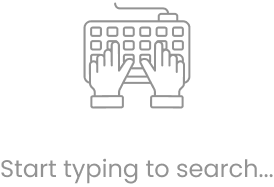
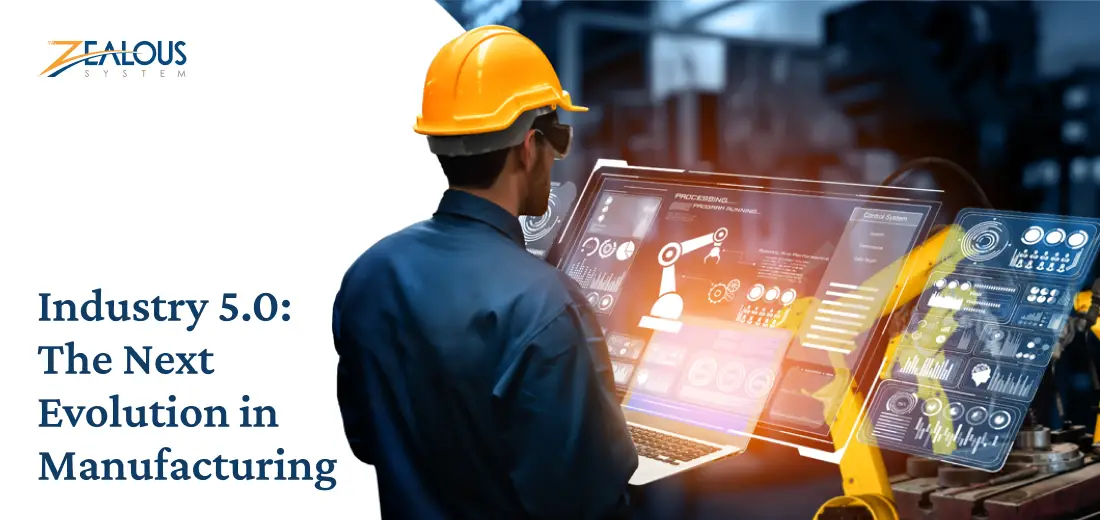
Industry 5.0 in manufacturing is a relatively new concept that is gaining a lot of attention as businesses and governments look for ways to make manufacturing more sustainable, resilient, and human-centric.
Throughout history, industries have seen significant changes. From machines taking over work in the 18th century, known as the Industrial Revolution, to today’s digital advancements in Industry 4.0, each era brought progress.
Now, we’re on the verge of a new era, Industry 5.0, which will redefine manufacturing in remarkable ways.
The European Union has been a leading advocate for Industry 5.0, and the concept has been incorporated into its industrial strategy. The EU sees Industry 5.0 as a way to create a more competitive and sustainable manufacturing sector that can help address the challenges of climate change and resource scarcity.
Industry 5.0 is the fifth industrial revolution, which is still in its early stages. But wait, before we make any impulsive decision to jump directly into 5.0, let’s understand it from its core.
In this blog, we will talk about what Industry 5.0 is, its features and principles, and the ways it has been improving the manufacturing industry with some real-world examples.
Before we begin, let’s have a sneak peek into the Industrial Revolution and society from 1.0 to 5.0.
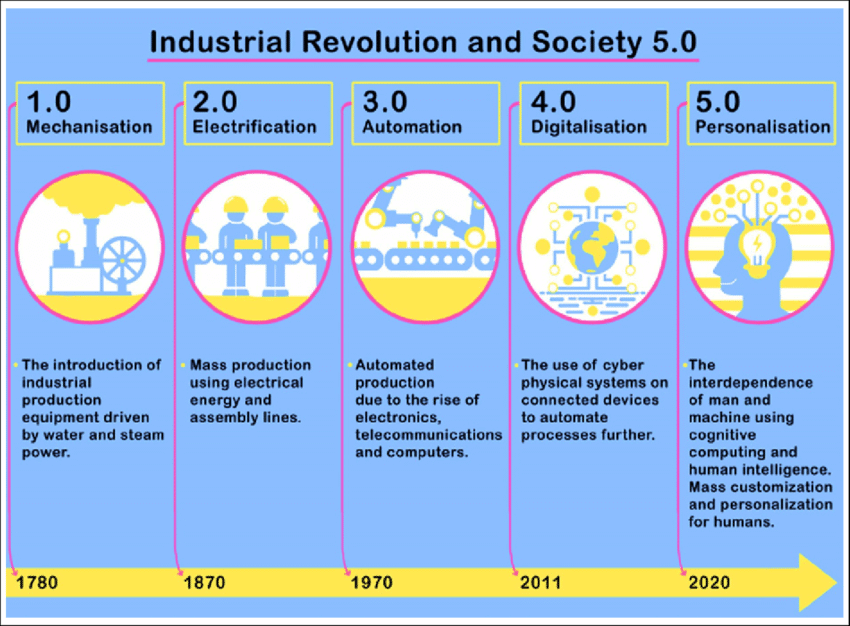
This was the first industrial revolution, which was characterized by the introduction of new technologies such as the steam engine, the spinning jenny, and the cotton gin. These technologies led to a significant increase in productivity and output and helped to transform the way goods were produced.
This was the second industrial revolution, which was characterized by the introduction of new technologies such as electricity, the internal combustion engine, and the assembly line. These technologies led to even greater increases in productivity and output and helped to create new industries such as automobiles and mass production.
This was the third industrial revolution, which was characterized by the introduction of new technologies such as computers, nuclear power, and space exploration. These technologies led to a major transformation of the way we live and work, and helped to create new industries such as telecommunications and information technology.
This is the fourth industrial revolution, which is characterized by the introduction of new technologies such as the Internet of Things (IoT), artificial intelligence (AI), and robotics. These technologies are leading to a new era of automation and connectivity, and are transforming the way we produce, consume, and interact with goods and services.
This is the fifth industrial revolution, which is still in its early stages. It is characterized by the convergence of physical, digital, and biological technologies, and is leading to a new era of intelligence, sustainability, and collaboration.
This convergence is leading to the development of new technologies such as artificial intelligence, robotics, and 3D printing.
Industry 5.0 has the potential to revolutionize many industries, including manufacturing, healthcare, and transportation. Let’s understand Industry 5.0 briefly.
Industry 5.0 is the fifth stage of industrial advancement, marked by the integration of artificial intelligence, robots, and the Internet of Things. It builds upon Industry 4.0 but places a strong focus on making work more centered around humans, sustainable, and resilient.
In Industry 5.0, robots and smart machines are used to enhance what humans can do, not replace them. This leads to more efficient and safe manufacturing, creating better working conditions.
Sustainability is a key principle in Industry 5.0. Smart factories are designed to produce less waste and pollution while using resources wisely, reducing their environmental impact.
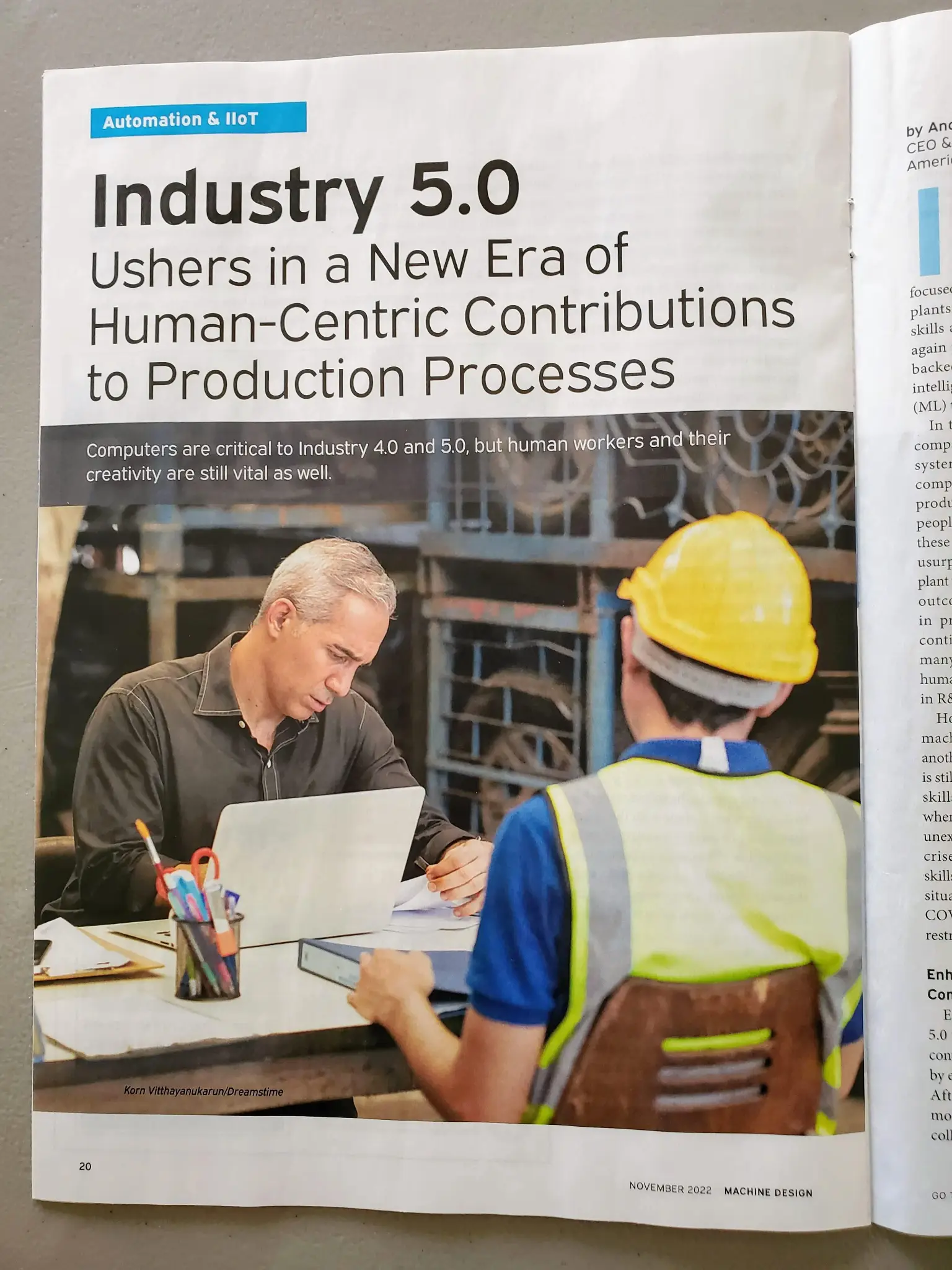
Even though it’s still new, Industry 5.0 could change how things are manufactured and improve our world by combining technology with human creativity and care for the environment.
Industry 5.0 is set to bring significant changes to manufacturing, making it more efficient, sustainable, and centered around people. Here are some specific ways Industry 5.0 will impact manufacturing:
Industry 5.0 will use robots, artificial intelligence, and digital technology more extensively in manufacturing. This will make production faster and allow for easier customization of products.
Industry 5.0 will encourage humans and machines to work together more effectively. Technologies like augmented reality and virtual reality will make this collaboration smoother.
Sustainability is a big part of Industry 5.0. It will use technologies like 3D printing to reduce waste and create energy-efficient robots.
Industry 5.0 will use AI and big data to understand customer needs better, resulting in products that are more tailored to individual preferences.
In the automotive sector, robots are welding car bodies, and AI optimizes production lines. Robots are increasingly being used in the automotive sector for a variety of tasks, including welding car bodies.
Robots are able to perform these tasks with precision and consistency, which can help to improve quality and productivity. Additionally, robots can work in dangerous or hazardous environments that would be unsafe for humans.
These real-world applications exemplify how Industry 5.0 is transforming various industries, with even more innovations anticipated as technology continues to advance.
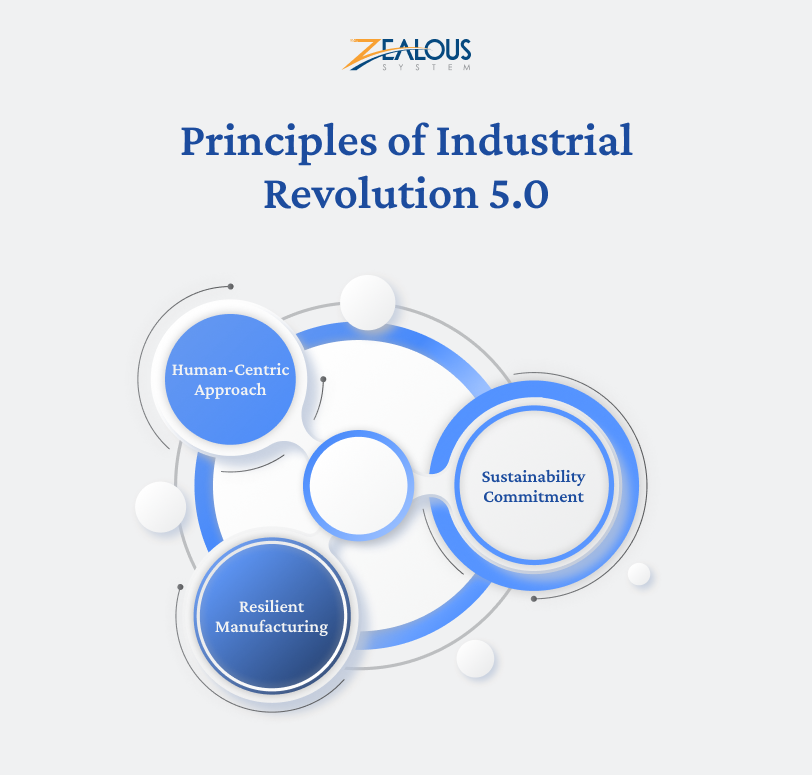
Industry 5.0 prioritizes the human workforce as the central element in production. Rather than replacing people, machines and automation are utilized to enhance human skills and productivity, fostering a collaborative work environment.
Industry 5.0 is committed to making manufacturing more sustainable by reducing energy consumption and resource usage. This is accomplished through innovative technologies like 3D printing, which minimizes waste, and the adoption of energy-efficient robotic systems.
Industry 5.0 aims to build a manufacturing sector capable of withstanding disruptions, whether from natural disasters or supply chain interruptions. This resilience is achieved through technologies like cloud computing and advanced data analytics, which enhance visibility and decision-making capabilities.
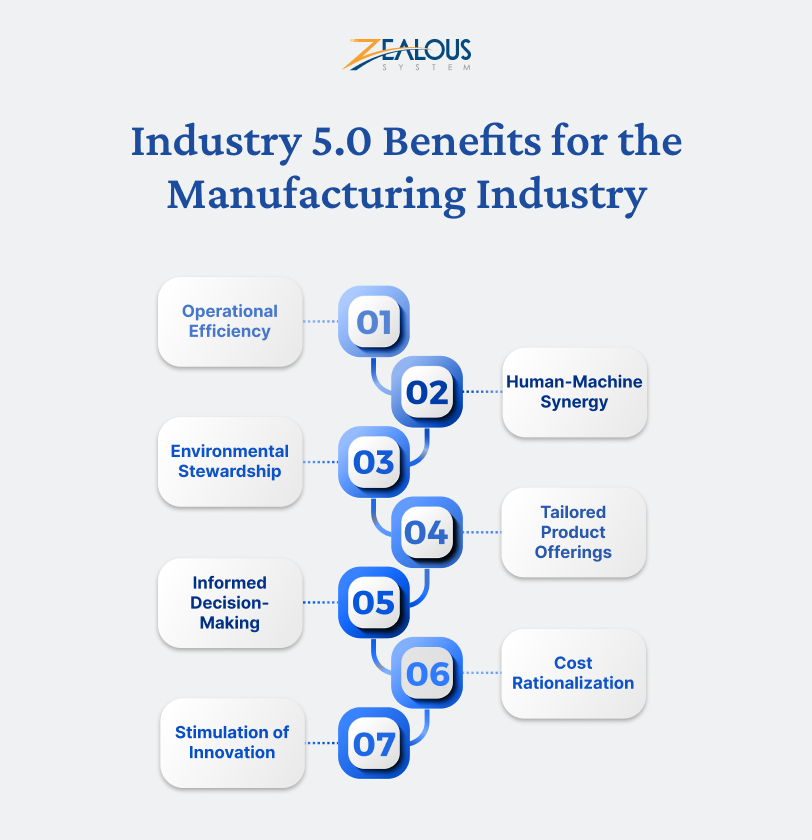
Industry 5.0 is poised to revolutionize manufacturing by introducing advanced technologies such as robotics, artificial intelligence, and digital systems.
A study by McKinsey & Company found that Industry 5.0 could lead to a 30% increase in operational efficiency in manufacturing.
These innovations will significantly elevate production efficiency, streamlining processes and facilitating greater product customization.
An integral facet of Industry 5.0 lies in its capacity to foster improved collaboration between human workers and automated machinery.
This collaborative dynamic is made possible through the integration of technologies like augmented reality and virtual reality, which enhance coordination and effectiveness in manufacturing operations.
Industry 5.0 places a strong emphasis on sustainability. Central to this is the deployment of eco-conscious technologies, including 3D printing, which
substantially reduces material waste, and the incorporation of energy-efficient robotic systems.
These measures are expected to curtail the environmental footprint of manufacturing processes.
Through the strategic application of artificial intelligence and robust data analysis, Industry 5.0 empowers manufacturers to gain deeper insights into customer preferences.
This insight allows for the creation of personalized products, aligning production more closely with consumer demands.
Industry 5.0 leverages cutting-edge technologies, such as artificial intelligence and extensive data analytics, to enhance decision-making processes within manufacturing.
These tools enable manufacturers to make well-informed choices concerning production volumes, inventory management, and marketing strategies.
By automating repetitive tasks, optimizing operational procedures, and minimizing waste, Industry 5.0 has the potential to significantly reduce manufacturing costs.
Stimulation of Innovation: Industry 5.0 equips manufacturers with state-of-the-art tools and technologies, fostering an environment conducive to innovation in product design and manufacturing methodologies.
Example: Adidas uses 3D printing to create customized shoes. This has helped the company to meet the needs of individual customers.
The key to Industry 5.0 is the collaboration of humans and machines. Industry 5.0 will boost productivity in manufacturing by recognizing the strengths of each party and assisting them in collaborating.
Businesses need to embrace these changes as we enter this exciting new era and invest in the technologies that will enable Industry 5.0, which will influence how we manufacture for years to come.
Let Zealous, your Industry 5.0 partner, enhance human-machine collaboration with tailored software solutions. Maximize productivity, quality, and innovation with Zealous.
Our team is always eager to know what you are looking for. Drop them a Hi!
Comments